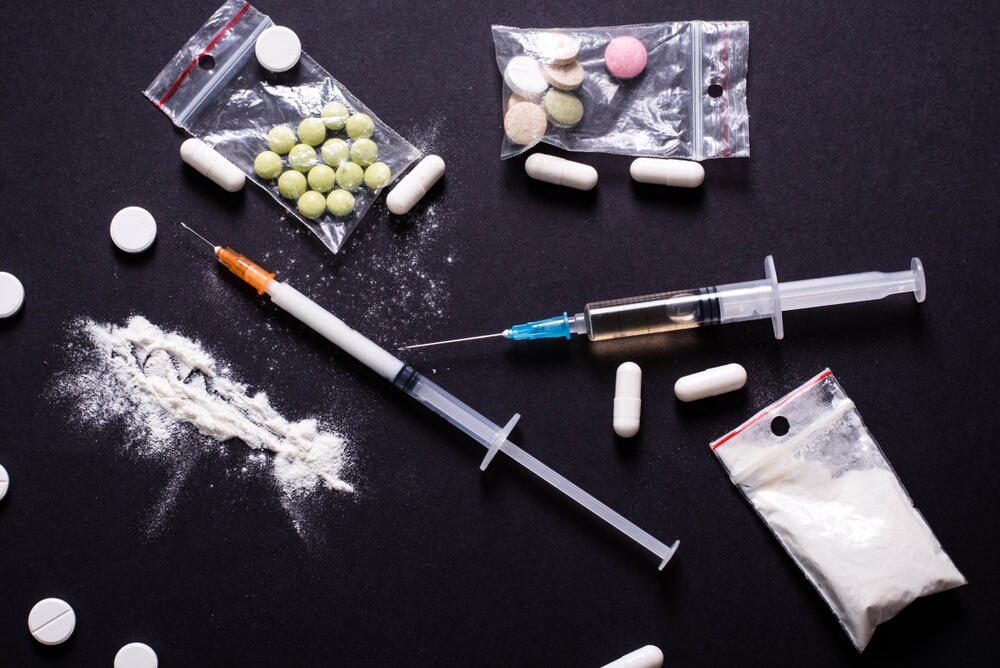
Top 10 Illegal Drugs and Their Effects
Legacy Healing Center Blog
Illegal drugs come in many forms and their effects can vary significantly.
There is a very long list of common illegal drugs that are used and abused all over the United States and we will review the top 10 illegal drugs.
There are different types of schedule drugs such as schedule I and II that have a higher potential for misuse.
Some of these types of schedule drugs are either unavailable to the public, are only available by prescription, but are limited to no refills such as Schedule III and IV drugs.
Effects of illegal drugs not only are changing individual’s wellbeing but also the nation. With a rise of opioid abuse, the effects of illegal drugs are making waves in communities and all over the nation.
Here we’re going to discuss the top 10 illegal drugs and their effects.
Common Illegal Drugs
Common illegal drugs fall into a few different categories and then within each of the categories there are certain substances that are used more than others.
These categories are:
• Cannabinoids – These type of substances aren’t illegal everywhere. They are either smoked or swallowed and create a euphoric, relaxed state for the individual.
• Opioids – These types of drugs are injected, smoked, swallowed or snorted and are classified as Schedule I, II, III and V drugs. They create euphoria and drowsiness as well as impairment.
• Stimulants – Stimulants are one of the more common illegal drugs that are schedule II substances. They are snorted smokes, injected and swallowed. They not only increase heart rate but also blood pressure and body temperature.
• Club Drugs – Club drugs are another type of common illegal drugs, popular within certain age groups. They are a schedule I and IV substance that can be swallowed, snorted or injected and depending on the substance create different effects. These effects range from hallucinogenic effects to lowered inhibition to sedation and memory loss.
• Dissociative Drugs – These illegal drugs are either not schedule drugs or are Schedule I, II or III. They can be chewed, smoked, injected, snorted and swallowed depending on the substance. Such as party drugs, they create a wide range of effects on the body but in general a feeling of being separated from one’s body hence; dissociative.
• Hallucinogens – Hallucinogens are swallowed, smoked, and absorbed through mouth tissues, such as LSD. They are Schedule I drugs that create an altered state of perception.
• Other – These can be steroids or inhalants that are either a schedule III or not scheduled substance that has very little effects on the mind but can create side effects for overall health.
Schedule I and II drugs are considered to be drugs that have a high potential for abuse and are stored in secure locations and are usually used for research.
Schedule II drugs are available for a non-refillable prescription. Schedule III and IV drugs can be administered via prescription and can be given up to six months of prescription. Schedule V drugs can sometimes be found over the counter.
“So many classes of drugs exist. Understanding how drugs work, where they work in the body and brain, and understanding the potential effects drugs have on mimicking mental illness can help healthcare practitioners treat addiction and educate the public,” states leading physician in Addiction Medicine and Psychiatry Dr. Ashish Bhatt, MRO of Legacy Healing Center. “Unfortunately, more classes of illicit drugs, synthetic substances, and research chemicals are being seen on the streets, both in the US and around the world. The range of symptoms caused by intoxication and withdrawal may often not follow a pattern. The battle to fight addiction becomes more complex as a result. People are seeking out the next “new high”. The sad part is that the dangers of these newer drugs are often not understood, by consumers on what they do to one’s body, often causing irreversible side effects, as well as the ability for healthcare personnel to ultimately treat these negative consequences. The lack of standardization with many of these chemicals, which are often mixed with other dangerous or toxic substances, results in higher rates of morbidity and mortality. We are seeing deaths we should not be seeing.”
Top 10 Illegal Drugs and their effects
The effects of illegal drugs on the body vary from substance to substance and may even be life-threatening if they are habit-forming and cause addiction.
The top 10 illegal drugs are:
1. Marijuana – Creates slowed reaction time, euphoria, relaxation and increased appetite. (Not illegal in every state)
2. Heroin – Euphoria, drowsiness as well as impaired coordination and slowed breathing.
3. Cocaine – Nasal damage, increased heart rate, and blood pressure, as well as increased energy and mental alertness.
4. Methamphetamine – Can cause severe dental problems, increased heart rate, blood pressure, anxiety, and mental alertness.
5. MDMA – Can cause sleep disturbances, depression, impaired memory, addiction as well as increased tactile sensitivity and lowered inhibition.
6. Ketamine – Can impair memory, cause delirium as well as create a feeling of being separated from one’s body.
7. LSD – Can increase body temperature and heart rate as well as create an altered state of perception and hallucinations.
8. Steroids – These create no intoxication effects but can alter blood pressure and create blood clots and liver cysts.
9. Inhalants – can give individuals muscle cramps, depression, and memory impairment as well as stimulation and loss of inhibition depending on the chemical.
10. PCP and Analogs – Causes anxiety, tremors, numbness as well as psychosis, aggression, and violence.
If you or someone you know is suffering from substance abuse, please call 888-597-3547 to start the road to recovery.